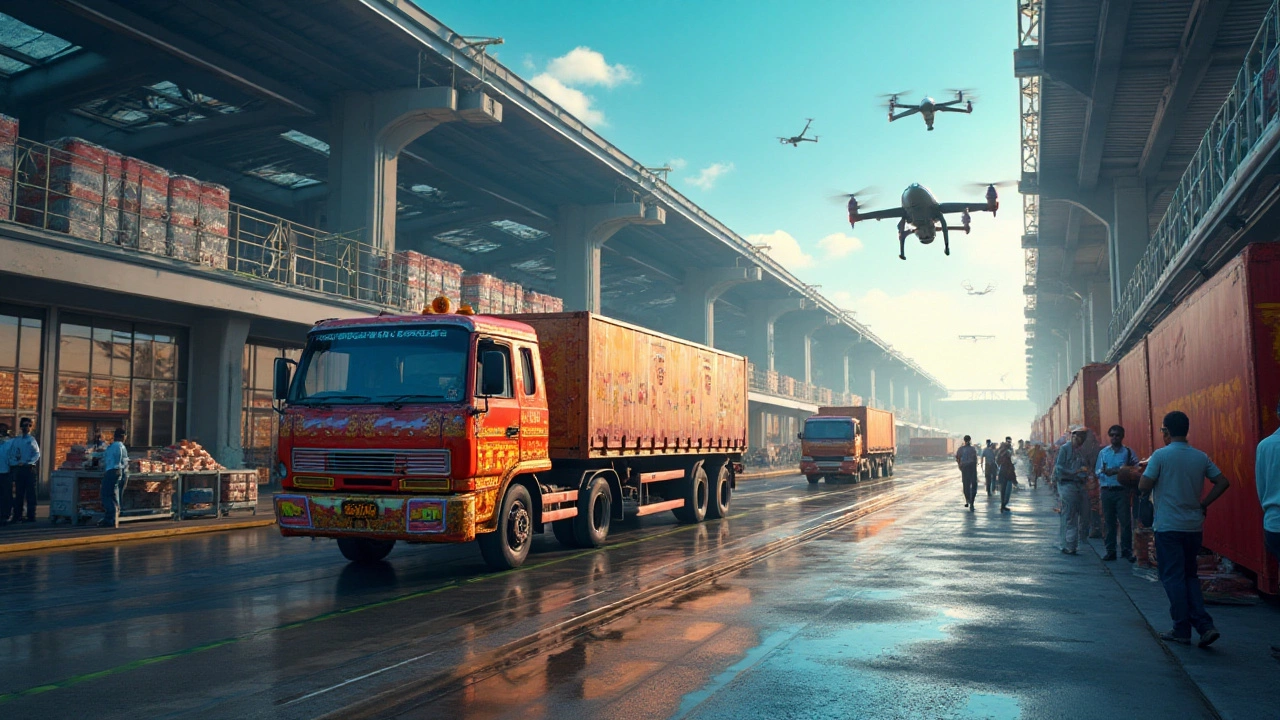Industry Growth in Logistics: What’s Driving the Boom?
If you’ve noticed more warehouses popping up around town or hear about faster delivery promises, you’re seeing industry growth in action. It isn’t just a fad – it’s a mix of exploding e‑commerce demand, new tech tools, and smarter cost‑cutting moves that are reshaping how goods move across India.
First up, online shopping is still on a tear. Every click translates into a new parcel, and customers now expect their orders within hours, not days. That pressure pushes companies to perfect last‑mile delivery, add more pick‑up points, and fine‑tune route planning. The result? A ripple effect that forces every part of the supply chain to get quicker and more reliable.
Tech is the secret sauce behind this speed. Warehouse Management Systems (WMS) and Transportation Management Software (TMS) are no longer optional; they’re the backbone of modern operations. Real‑time inventory tracking, AI‑driven load optimization, and automated picking lines shave minutes off each order, turning what used to be a slow process into a seamless flow.
Warehouse Innovations Fueling Expansion
Today's warehouses are more like smart hubs. Flexible racking, robotic pickers, and IoT sensors keep stock exactly where it needs to be. Companies that invest in these solutions see higher storage density, fewer errors, and lower labor costs. Even the biggest fulfillment centers, like the massive Amazon hubs, serve as proof that scaling up space while keeping efficiency high is possible.
Beyond traditional warehouses, mega‑logistics parks and fulfillment centers are emerging. These giant spaces combine storage, sorting, and even direct‑to‑consumer shipping under one roof. The result? Faster turnaround times and a better match between supply and demand, especially during peak seasons.
Smart Shipping Strategies Cutting Costs
International shipping used to be a gamble with unpredictable fees. Now, data‑driven tools let shippers compare carriers, predict customs delays, and bundle shipments for bulk discounts. Simple tactics like consolidating orders, choosing slower but cheaper routes for non‑urgent goods, or leveraging regional hubs can slash costs by up to 30%.
Driver pay is another piece of the puzzle. Per‑mile rates and tip structures are shifting as gig platforms compete for talent. Knowing the current average rate per mile helps businesses budget accurately and keeps drivers motivated, which in turn reduces turnover and improves delivery reliability.
Analytics platforms are turning raw data into actionable insights. From logistic regression models that forecast demand spikes to dashboards that monitor KPI health in real time, the right software turns complexity into clarity. When teams can see exactly where bottlenecks form, they can act fast and keep the growth momentum rolling.
All these factors—rising online orders, smarter warehouses, cost‑effective shipping, and powerful analytics—are the engines powering industry growth. If you’re looking to ride this wave, start by auditing your current processes, adopt a scalable WMS, and partner with a logistics provider that can match your speed and scale. StockOne Logistics is ready to help you turn these trends into tangible results.
Is There a Growing Demand for Logistics Services?
The logistics industry, driven by ever-evolving consumer demands and global market changes, is experiencing significant growth. Factors like technological advancements, e-commerce boom, and globalization are fueling the need for efficient logistics solutions. Delving into market dynamics, challenges, and future trends, we explore why logistics services are becoming increasingly essential. Discover how companies are adapting to meet rising demand and seizing opportunities in this critical sector.
Read More